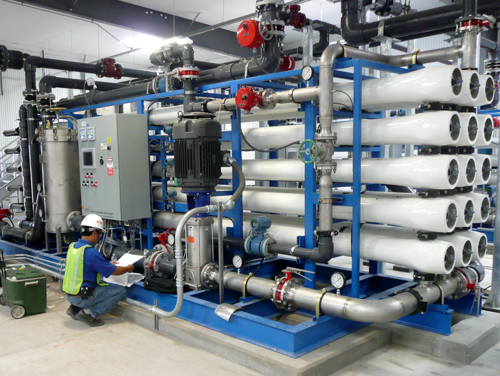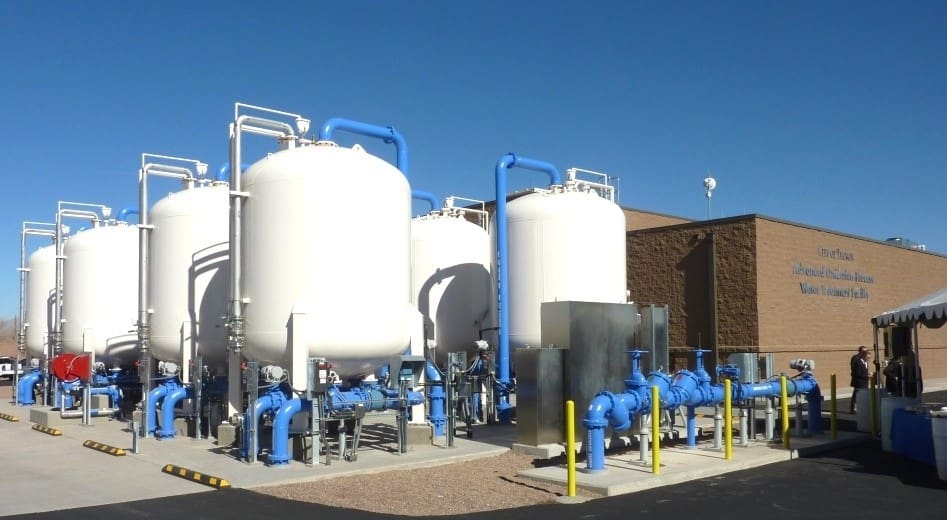M270 PFAS Treatment for Rapid Removal of Contaminants
Wiki Article
Your Guide to PFAS Treatment Technologies and Advantages
The prevalence of PFAS contamination in water resources requires a complete understanding of readily available treatment technologies. Numerous techniques, such as activated carbon purification, ion exchange systems, and progressed oxidation processes, existing unique benefits in resolving these consistent pollutants. Each modern technology not just targets specific PFAS substances yet also plays a vital duty in enhancing total water high quality and shielding ecological stability. As areas face the ramifications of PFAS direct exposure, the choice of a suitable therapy method becomes progressively vital, triggering a better examination of these innovations and their particular advantages.Comprehending PFAS Contamination
Comprehending PFAS contamination is critical for resolving its pervasive effect on ecological and human wellness (m270 pfas treatment). Per- and polyfluoroalkyl substances (PFAS) are a group of artificial chemicals widely made use of in numerous industrial and customer items because of their water- and grease-resistant residential properties. Generally located in firefighting foams, non-stick kitchenware, and water-repellent textiles, PFAS have actually gone into the atmosphere with manufacturing processes, wastewater discharges, and leaching from land fillsAs soon as launched, these compounds continue the atmosphere, resulting in widespread contamination of soil and water sources. Their distinct chemical structure, characterized by strong carbon-fluorine bonds, renders them resistant to deterioration, causing a sensation called "for life chemicals." PFAS can collect in the human body and the food chain, possibly creating damaging wellness impacts, including immune system disturbance, developmental concerns, and a boosted threat of specific cancers.
Regulative firms and health and wellness organizations are significantly identifying the relevance of PFAS contamination, prompting initiatives to keep track of, analyze, and alleviate its effects. Comprehending the paths of PFAS contamination is necessary for informing public plan and developing reliable strategies to safeguard both ecological and human health.
Review of Treatment Technologies
Different therapy technologies have been created to attend to the difficulties posed by PFAS contamination in water and soil. These modern technologies can be broadly categorized right into several classifications, each with its one-of-a-kind mechanisms and efficiency in getting rid of PFAS compounds.One famous method is ion exchange, which utilizes resin materials to capture and remove PFAS from polluted water. Another innovation, advanced oxidation processes (AOPs), uses strong oxidants and ultraviolet light to damage down PFAS right into much less unsafe compounds.

Activated Carbon Filtering
Turned on carbon purification is an extensively utilized method for the removal of PFAS from contaminated water, understood for its capacity to adsorb a wide range of organic compounds. This modern technology employs triggered carbon, a very permeable material with a substantial surface area, which assists in the binding of PFAS molecules through physical adsorption. The effectiveness of activated carbon in removing PFAS is affected by numerous factors, consisting of the type of carbon utilized, the get in touch with time, and the concentration of PFAS in the water.One of the benefits of triggered carbon purification is its adaptability; it can be carried out in different setups, such as granular activated carbon (GAC) systems or powdered activated carbon (PAC) systems. GAC systems are normally employed in larger-scale applications, while political action committee can be made use of in smaller sized or short-lived arrangements. The technology is reasonably simple to run and preserve, making it available for several water treatment facilities.

Ion Exchange Equipment
Ion exchange systems represent another efficient method for the elimination of PFAS from polluted water, enhancing techniques like activated carbon filtering. These systems operate the concept of exchanging ions in the water with ions hung on a resin product. Ion exchange materials can be specifically developed to target the adversely charged PFAS substances, efficiently recording them and allowing cleaner water to travel through.One of the main advantages of ion exchange systems is their capability to get rid of a variety of PFAS, including both long-chain and short-chain versions. This adaptability makes them ideal for different applications, varying from community water therapy to industrial processes. Additionally, ion exchange systems can typically attain lower detection restrictions for PFAS compared to a few get redirected here other therapy approaches, therefore boosting water quality.
Nevertheless, it is necessary to keep an eye on and take care of the regeneration of ion exchange media, as the efficiency can decrease over time because of saturation. Proper maintenance and substitute of the material are important for maintaining the system's effectiveness. Generally, ion exchange systems give a trustworthy and reliable solution for PFAS elimination, adding considerably to risk-free alcohol consumption water requirements and ecological protection.
Advanced Oxidation Processes
Advanced Oxidation Processes (AOPs) use powerful oxidants to efficiently weaken PFAS compounds in infected water. These ingenious treatment methods create highly responsive varieties, such as hydroxyl radicals, that can break down complex PFAS particles into much less harmful results. m270 pfas treatment. AOPs generally utilize combinations of ultraviolet (UV) light, ozone, hydrogen peroxide, or Fenton's reagent, enhancing the oxidation potential and enhancing destruction efficiencyThe main benefit of AOPs lies in their capability to target a broad variety of PFAS compounds, including both long-chain and short-chain variants. This convenience is necessary, as PFAS contamination typically entails mixtures of various substances with differing chemical structures. AOPs can be integrated right into existing water therapy systems, making them a functional service for several communities and industries.
Nonetheless, the implementation of AOPs can be resource-intensive, requiring mindful consideration of functional prices and energy navigate here usage. Furthermore, while AOPs work in damaging down PFAS, they might not totally get rid of all results, demanding more therapy actions - m270 pfas treatment. Generally, AOPs stand for an encouraging avenue for addressing PFAS contamination, contributing to cleaner water sources and boosted public wellness defense

Final Thought
By selecting the ideal innovation, communities can improve water top quality, protect public health, his explanation and reduce the ecological dangers associated with PFAS exposure. Continued research study and application of these techniques are important for effective management of PFAS contamination in impacted areas.Report this wiki page